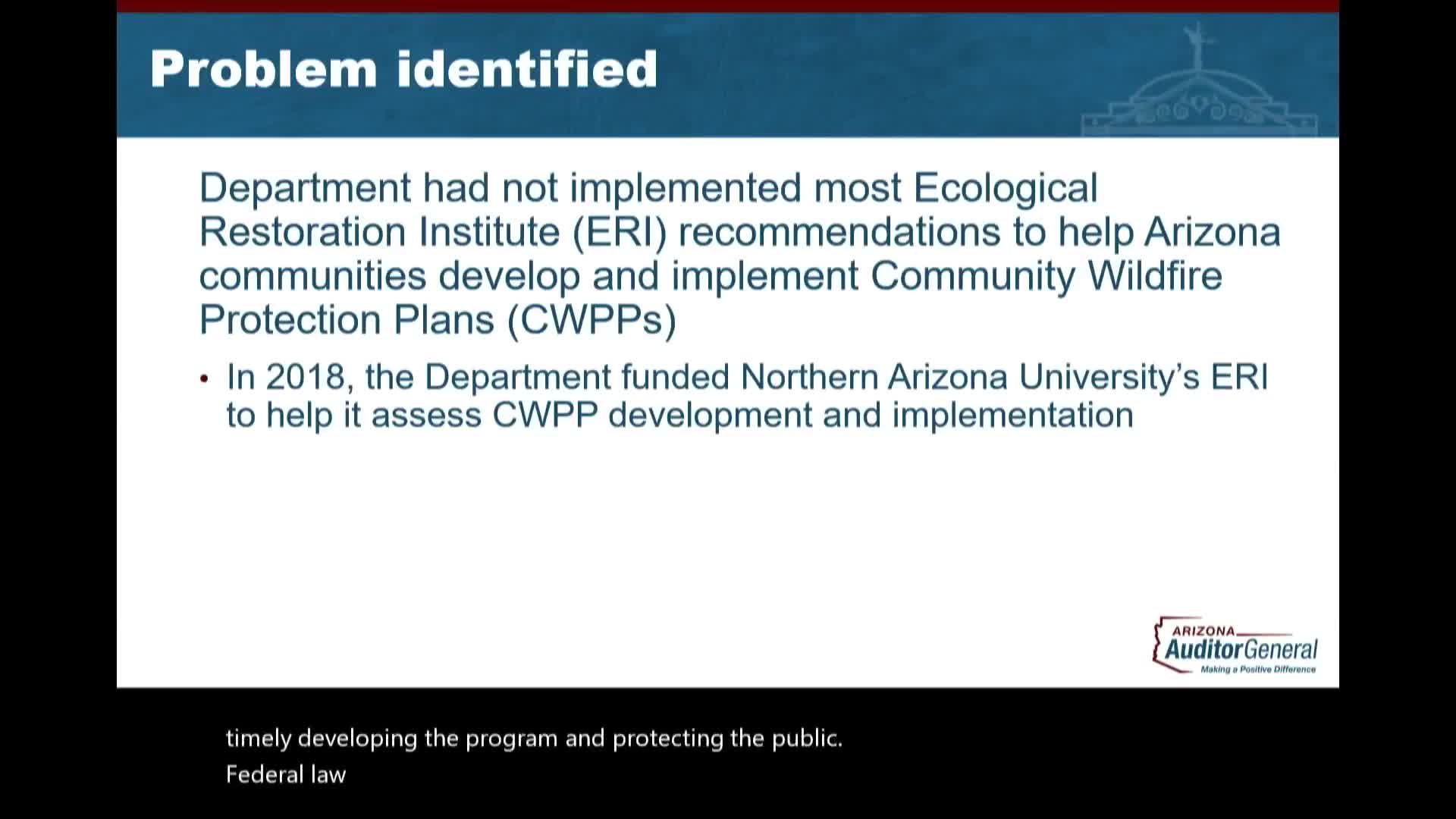Arizona Department faces scrutiny for delayed wildfire protection plans implementation
June 06, 2025 | 2025 Legislature Arizona, Arizona
This article was created by AI summarizing key points discussed. AI makes mistakes, so for full details and context, please refer to the video of the full meeting. Please report any errors so we can fix them. Report an error »

In a recent meeting of the Joint Legislative Audit Committee, the pressing issue of wildfire preparedness in Arizona took center stage. As the sun set over the state, committee members gathered to discuss the critical role of Community Wildfire Protection Plans (CWPPs) in safeguarding communities from the growing threat of wildfires.
Federal law empowers the Arizona Department of Forestry and Fire Management to collaborate with local communities to create and approve these CWPPs. These plans are designed to help communities develop strategies to reduce wildfire risks. However, a troubling report revealed that many of the recommendations made by the Ecological Restoration Institute (ERI) in December 2019 have yet to be implemented. This lack of action raises concerns about the effectiveness of wildfire risk management across the state.
The ERI, a federally recognized institution specializing in forest restoration, had provided essential guidance on establishing state-specific requirements for CWPPs. Yet, as of April 2023, the department had not acted on most of these recommendations. This oversight could leave many Arizona communities without the necessary tools and knowledge to effectively assess wildfire risks and prioritize areas for hazardous fuel reduction.
The audit highlighted that four counties—Santa Cruz, Coconino, Pima, and Cochise—are currently at high risk for wildfires and either lack a CWPP or have outdated plans. Additionally, three more counties, including Apache, Graham, and Greenlee, were identified as having outdated CWPPs and being at high risk according to the U.S. Forest Service. Notably, Apache County has been working on developing or revising its CWPP since 2021, yet progress remains slow.
As the committee members deliberated, the urgency of the situation became clear. Without updated and effective CWPPs, communities may find themselves ill-prepared for the wildfire season, facing increased risks that could have devastating consequences. The discussions underscored the need for immediate action to ensure that Arizona's communities are equipped to protect themselves against the looming threat of wildfires. The path forward remains uncertain, but the call for accountability and collaboration is louder than ever.
Federal law empowers the Arizona Department of Forestry and Fire Management to collaborate with local communities to create and approve these CWPPs. These plans are designed to help communities develop strategies to reduce wildfire risks. However, a troubling report revealed that many of the recommendations made by the Ecological Restoration Institute (ERI) in December 2019 have yet to be implemented. This lack of action raises concerns about the effectiveness of wildfire risk management across the state.
The ERI, a federally recognized institution specializing in forest restoration, had provided essential guidance on establishing state-specific requirements for CWPPs. Yet, as of April 2023, the department had not acted on most of these recommendations. This oversight could leave many Arizona communities without the necessary tools and knowledge to effectively assess wildfire risks and prioritize areas for hazardous fuel reduction.
The audit highlighted that four counties—Santa Cruz, Coconino, Pima, and Cochise—are currently at high risk for wildfires and either lack a CWPP or have outdated plans. Additionally, three more counties, including Apache, Graham, and Greenlee, were identified as having outdated CWPPs and being at high risk according to the U.S. Forest Service. Notably, Apache County has been working on developing or revising its CWPP since 2021, yet progress remains slow.
As the committee members deliberated, the urgency of the situation became clear. Without updated and effective CWPPs, communities may find themselves ill-prepared for the wildfire season, facing increased risks that could have devastating consequences. The discussions underscored the need for immediate action to ensure that Arizona's communities are equipped to protect themselves against the looming threat of wildfires. The path forward remains uncertain, but the call for accountability and collaboration is louder than ever.
View full meeting
This article is based on a recent meeting—watch the full video and explore the complete transcript for deeper insights into the discussion.
View full meeting
